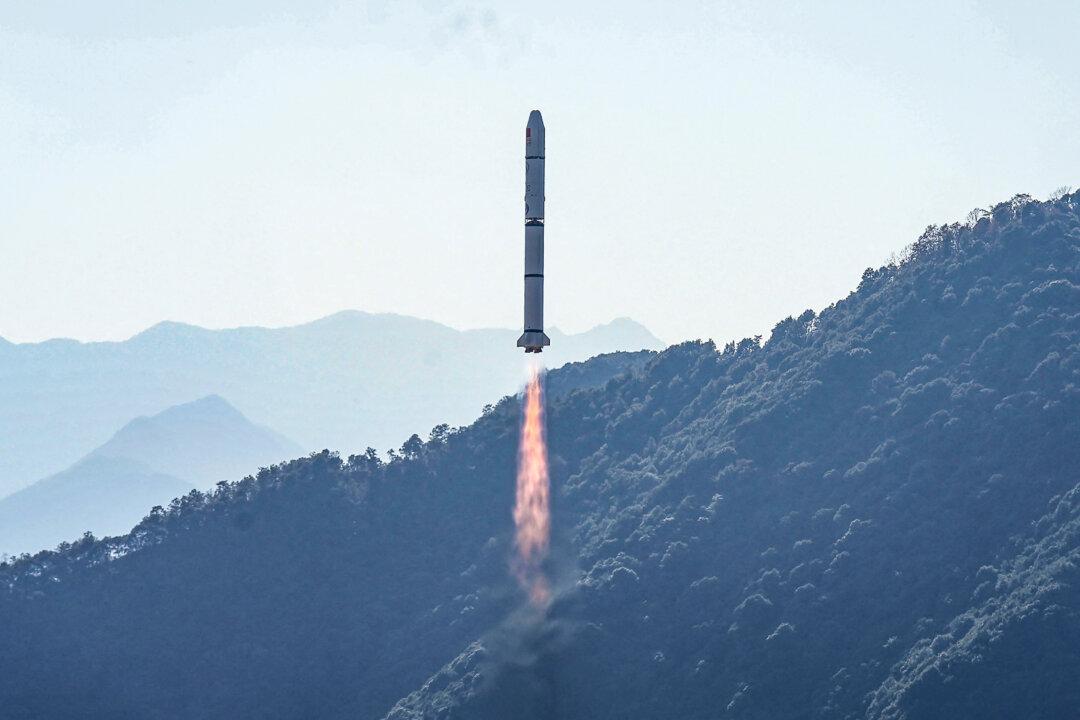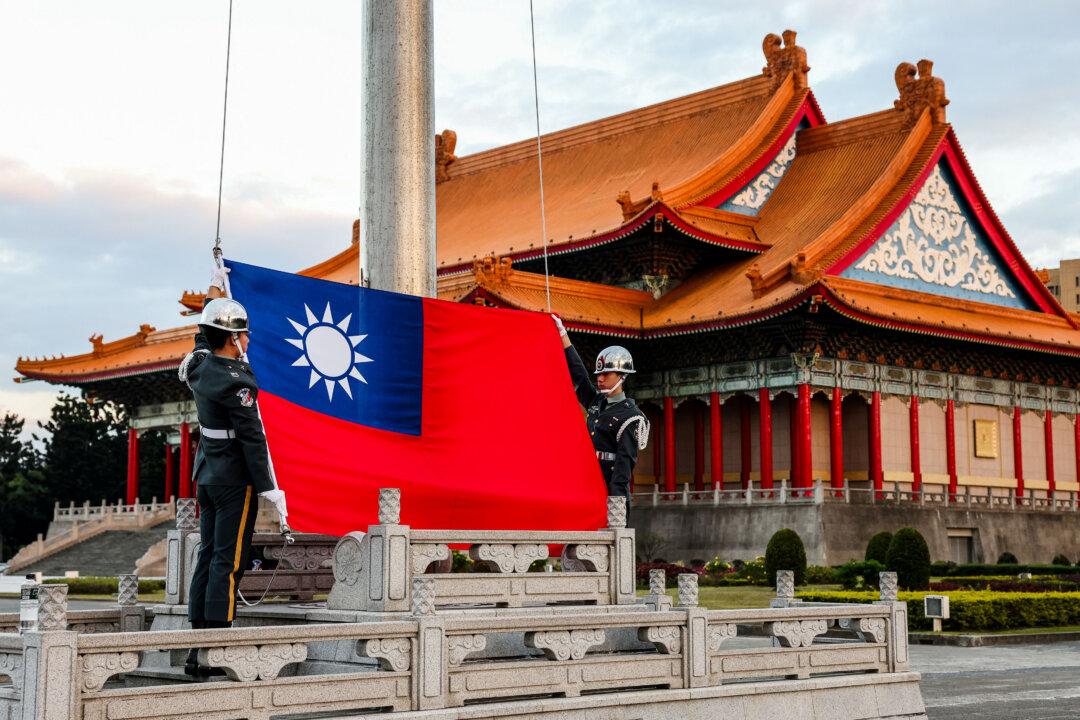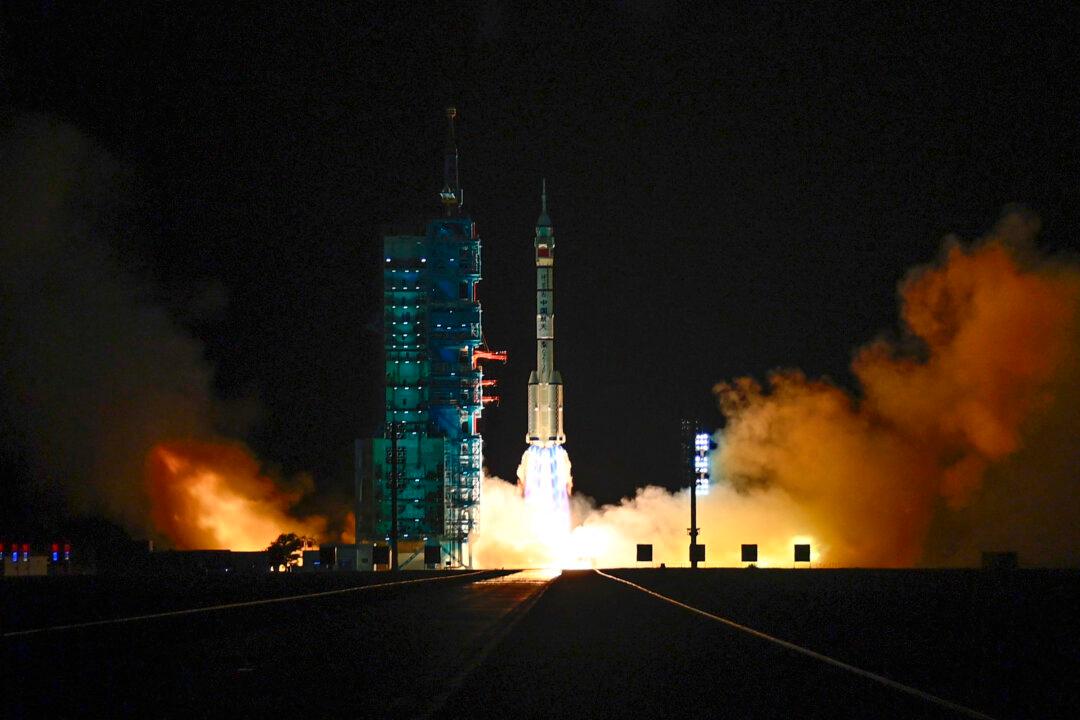The first batch of 18 satellites in the constellation dubbed ’thousand sails’ has been launched into orbit.
In its latest attempt to challenge the United States’ space dominance and SpaceX’s Starlink, China launched a low-orbit satellite constellation with surveillance capability.
According to Chinese state media, the first batch of 18 satellites in the constellation dubbed “Qianfan” or “thousand sails” was launched into orbit by state-controlled Shanghai Yuxin Satellite Technology Company on Aug. 6. The entire project is a future network of 14,000 satellites, offering multiple services, including direct-to-device connectivity. Half of those spacecraft will be launched by the end of next year and another half by the end of 2027.
Starlink, owned by the U.S. company SpaceX, has provided Ukraine with internet and communication services, a critical element to sustain the nation in its war with Russia. As of Aug. 2, the network had about 7,000 satellites in orbit, making it the largest low-orbit constellation in the world.
Starlink’s capability had attracted the attention of the U.S. Department of Defense,
which contracted SpaceX in 2021 to create a network of satellites known as Starshield to serve America’s defense and intelligence agencies.
The Chinese Communist Party (CCP) noticed as well.
In April, the regime’s PLA Daily newspaper, the official newspaper for the CCP’s People’s Liberation Army, accused the United States of “militarizing space.”
Chinese military researchers analyzed various capabilities of Starlink in 2022. They wrote that Starlink poses “potential dangers and challenges” to the CCP. The researchers called on the regime to develop new countermeasures that would include abilities “to disable some Starlink satellites and to disrupt the constellation’s operational system.”
Last year, scientists at the University of Aerospace Engineering, a PLA research university, proposed methods to “suppress” Starlink and Starshield’s communications, including electromagnetic interference and employing high-power microwaves or lasers to damage or destroy specific Starlink satellites.
In addition, Chinese defense journals have analyzed Ukrainian operations and the potential use of American technologies, including Starlink, in a future war against Taiwan, according to a Reuters
report in 2023.
Gen. Stephen N. Whiting, head of U.S. Space Command,
warned in April that China’s advances in space were “breathtakingly fast.”
CCP’s Space Ambitions and Challenges
The Qianfan Constellation project was not the CCP’s first attempt.
The launch of Starlink satellites in 2019 marked the introduction of a satellite internet system with global coverage that posed a potential threat to China’s internet firewall. Starlink may offer services to China that can bypass the CCP’s current
internet censorship. Elon Musk said in 2022 that the Chinese regime requested him not to sell Starlink in China.
The following year, the CCP submitted the “GW”—acronym for
Guo Wang or national network—internet constellation plan to the International Telecommunication Union (ITU), aiming to launch around 13,000 satellites into low orbit. However, the GW plan was slow and failed to become the first to launch satellites for the CCP.
Through the Qianfan Constellation project, the CCP seizes Low-Earth Orbit (LEO) and frequency resources—currently overseen by the International Telecommunications Union (ITU) on a “first come, first served” basis—to build its network system.
Due to its closer distance to Earth, the LEO is advantageous in imaging, communications, and real-time information sharing on the battlefield.
Si-Fu Ou, a senior fellow and director of the Division of Chinese Politics, Military, and Warfighting Concepts at Taiwan’s Institute for National Defense and Security Research, told The Epoch Times that China’s satellite constellation development is for military purposes.
He said that the CCP’s anti-satellite capabilities are already a reality and will continue to advance. However, given the United States’ current technological and military strength, China’s satellite constellation is unlikely to catch up with the United States in the short term.
Tsungnan Lin, a professor of electrical engineering at National Taiwan University, told The Epoch Times that China’s investments in Qianfan showcase the regime’s ambitions to develop a “Chinese Starlink” despite the country’s current economic downturn. The
Chinese economy has been marred by deflation threats, reduced exports, and heavily indebted property markets and local governments.
“This effort aims to showcase its ‘self-sufficiency’ capabilities and to prepare for potential conflicts with the United States,” Lin said.
Xin Ning contributed to the report.






